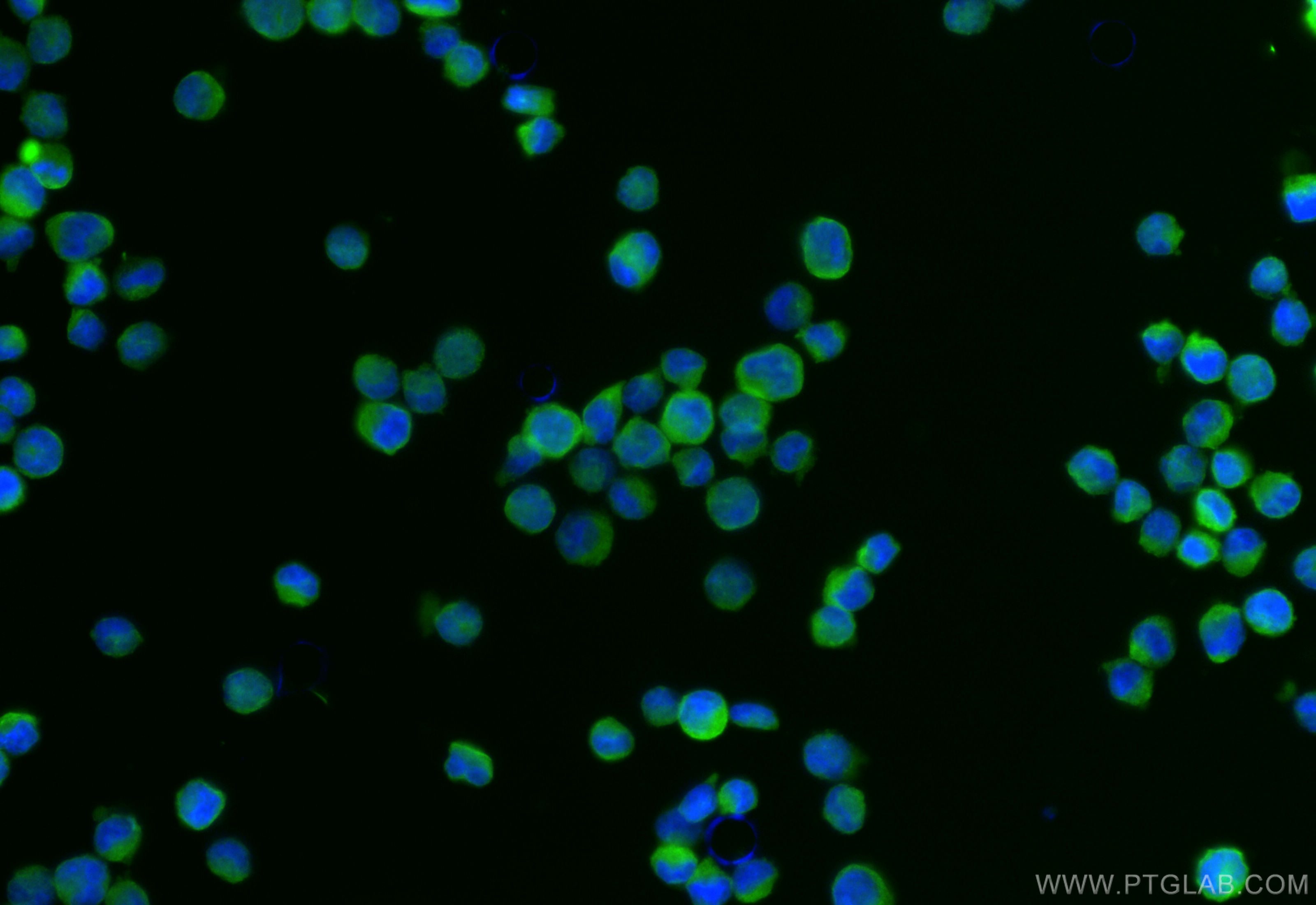验证数据展示
经过测试的应用
| Positive IF/ICC detected in | K-562 cells |
推荐稀释比
| 应用 | 推荐稀释比 |
|---|---|
| Immunofluorescence (IF)/ICC | IF/ICC : 1:50-1:500 |
| It is recommended that this reagent should be titrated in each testing system to obtain optimal results. | |
| Sample-dependent, Check data in validation data gallery. | |
产品信息
CL488-84391-4 targets IL-12RB1/CD212 in IF/ICC applications and shows reactivity with human samples.
| 经测试应用 | IF/ICC Application Description |
| 经测试反应性 | human |
| 免疫原 |
Recombinant Protein 种属同源性预测 |
| 宿主/亚型 | Rabbit / IgG |
| 抗体类别 | Recombinant |
| 产品类型 | Antibody |
| 全称 | interleukin 12 receptor, beta 1 |
| 别名 | IL12RB1, 241661D7, CD212, IL 12R beta 1, IL 12R subunit beta 1 |
| 计算分子量 | 662 aa, 73 kDa |
| GenBank蛋白编号 | BC029121 |
| 基因名称 | IL12RB1 |
| Gene ID (NCBI) | 3594 |
| 偶联类型 | CoraLite® Plus 488 Fluorescent Dye |
| 最大激发/发射波长 | 493 nm / 522 nm |
| 形式 | Liquid |
| 纯化方式 | Protein A purification |
| UNIPROT ID | P42701 |
| 储存缓冲液 | PBS with 50% glycerol, 0.05% Proclin300, 0.5% BSA, pH 7.3. |
| 储存条件 | Store at -20°C. Avoid exposure to light. Stable for one year after shipment. Aliquoting is unnecessary for -20oC storage. |
背景介绍
IL12RB1, also named as Interleukin-12 receptor subunit beta-1 or CD212, is a 662 amino acid protein, which contains 5 fibronectin type-III domains and belongs to the type I cytokine receptor family. Type 2 subfamily. IL12RB1 localizes in the membrane and functions as an interleukin receptor which binds interleukin-12 with low affinity and is involved in IL12 transduction. Associated with IL12RB2 it forms a functional, high affinity receptor for IL12. Associates also with IL23R to form the interleukin-23 receptor which functions in IL23 signal transduction probably through activation of the Jak-Stat signaling cascade.
实验方案
| Product Specific Protocols | |
|---|---|
| IF protocol for CL Plus 488 IL-12RB1/CD212 antibody CL488-84391-4 | Download protocol |
| Standard Protocols | |
|---|---|
| Click here to view our Standard Protocols |


